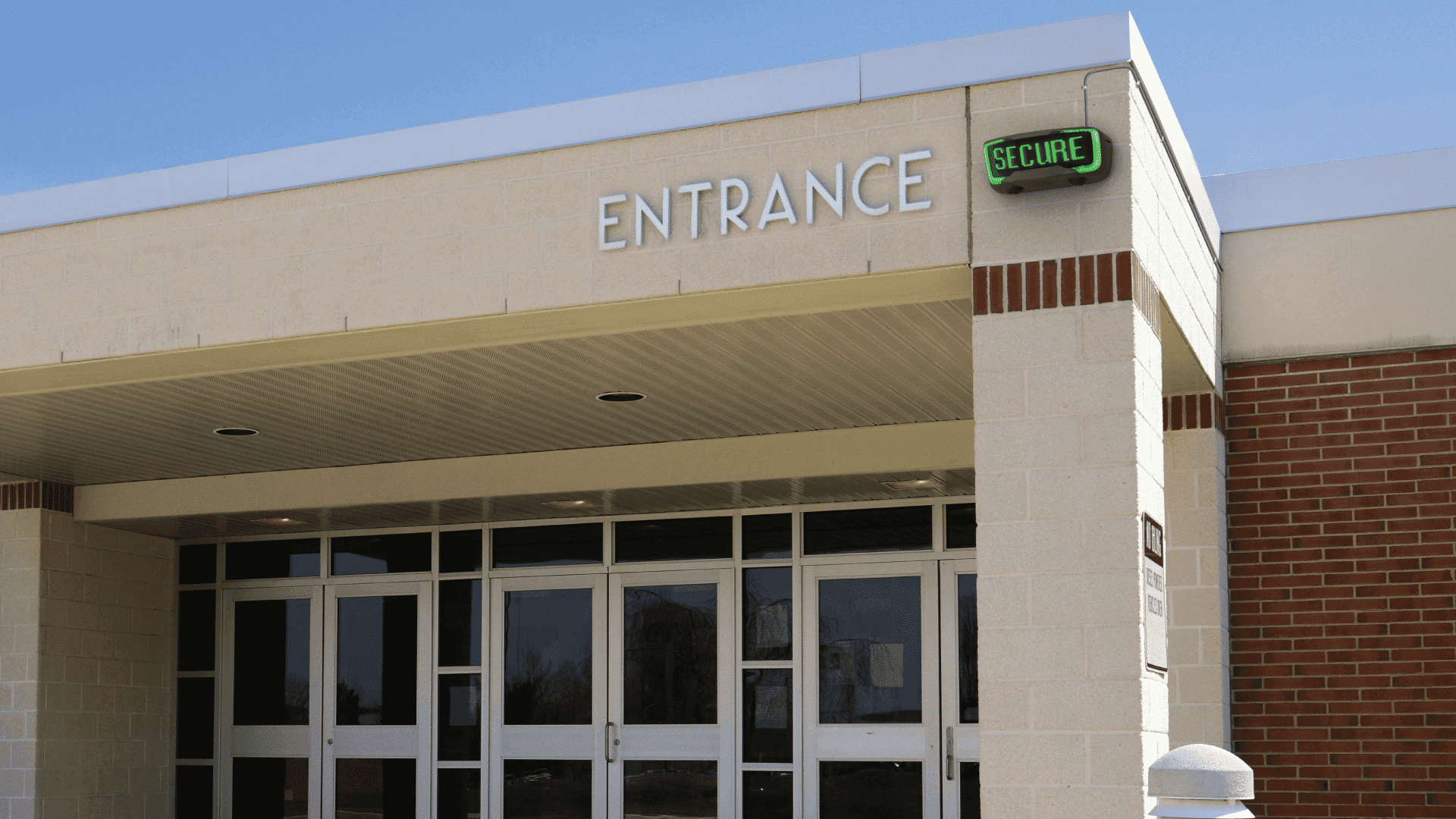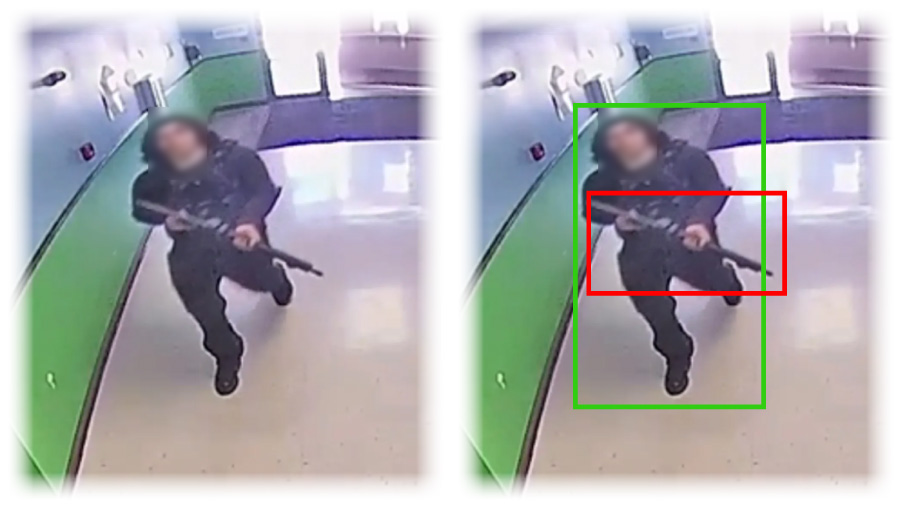The rise in school shootings, corporate active shooter incidents, and attacks on houses of worship has underscored the urgent need for proactive measures to prevent and mitigate such tragedies. One promising solution that has gained traction in recent years is the use of gun detection technology to harden these vulnerable spaces and buy precious time in the event of an emergency.
In the urgent call to address the alarming rise of active shooter incidents in schools and communities, there’s a glaring oversight: the underutilization of technology as a proactive solution. While debates rage on about policy reforms and social interventions, the transformative potential of technology remains largely ignored. Advanced systems leveraging artificial intelligence, surveillance, and threat detection algorithms have the capability to detect and thwart potential threats before they escalate into tragedies. Yet, the focus persists on reactive measures, leaving a critical gap in our approach to preventing gun violence. It’s time to recognize that technological innovation can serve as a powerful ally in our collective efforts to safeguard our schools, workplaces, and places of worship. By harnessing the power of technology alongside policy reforms and community engagement, we can forge a comprehensive and forward-thinking strategy to prevent active shooter incidents and protect our communities.
Gun detection technology occupies a unique position in the ongoing debate surrounding gun rights and school safety measures. For those advocating for stricter gun control laws, the deployment of gun detection technology offers a non-invasive solution that focuses on preventing gun violence without infringing upon Second Amendment rights. By detecting firearms in sensitive environments such as schools, corporate campuses, and houses of worship, these systems can help address the root cause of the issue while respecting the rights of law-abiding gun owners. Conversely, for proponents of arming school officials as a means of enhancing security, gun detection technology complements existing measures by providing an additional layer of defense without relying solely on human intervention. Rather than arming individuals, these systems empower security personnel and law enforcement to respond effectively to threats as they arise, thereby reducing the likelihood of escalation and minimizing the potential for harm. In essence, gun detection technology serves as a pragmatic solution that bridges the gap between opposing viewpoints, offering a path forward towards safer communities without compromising on fundamental values or principles.
Gun detection technology utilizes advanced camera technology and AI-powered analytics to identify firearms, alert authorities to potential threats, and initiate lock-down procedures in real-time. These systems can be seamlessly integrated into existing security infrastructure, including surveillance cameras, access control systems, and alarm systems, providing an additional layer of protection against violent intrusions.

Gun detection technology utilizes advanced camera technology and AI-powered analytics to identify firearms, alert authorities to potential threats, and initiate lock-down procedures in real-time. These systems can be seamlessly integrated into existing security infrastructure, including surveillance cameras, access control systems, and alarm systems, providing an additional layer of protection against violent intrusions.
One of the key advantages of gun detection technology is its ability to add valuable time to response efforts during a crisis. By swiftly identifying the presence of a firearm, security personnel and law enforcement can be immediately alerted, allowing them to rapidly assess the situation and take appropriate action. Whether it’s initiating lockdown procedures, evacuating occupants to safety, or confronting the threat head-on, every second counts in an emergency scenario.
Furthermore, the deployment of gun detection technology can serve as a powerful deterrent against potential perpetrators. The knowledge that a facility is equipped with advanced detection systems can dissuade individuals intent on carrying out acts of violence, knowing that their actions are more likely to be detected and thwarted.
Moreover, these systems are highly cost-effective and scalable, making them accessible to a wide range of institutions and organizations. Whether it’s a small rural school, a bustling corporate campus, or a bustling place of worship, gun detection technology can be tailored to meet the unique security needs and budgetary constraints of any facility.
In the context of schools, where the safety of students and staff is of paramount concern, the implementation of gun detection technology can provide much-needed peace of mind for parents, educators, and administrators alike. By proactively identifying and neutralizing potential threats, these systems can create a safer learning environment where students can thrive without fear of violence.
While the presence of school resource officers (SROs) and the implementation of security measures such as metal detectors have been touted as strategies to enhance school safety, it’s essential to recognize their limitations in mitigating school shooting incidents. Despite their presence, there have been instances where SROs were unable to prevent or effectively respond to shootings, as seen in tragic events like the Marjory Stoneman Douglas High School shooting in Parkland, Florida. Additionally, studies have shown that the mere presence of metal detectors does not guarantee the prevention of violence and may create a false sense of security. Moreover, concerns have been raised about the potential for SROs to contribute to the school-to-prison pipeline and disproportionately target marginalized students, highlighting the complexities surrounding their role in ensuring school safety. While SROs and metal detectors can serve as components of a broader safety strategy, it’s crucial to acknowledge their limitations and explore comprehensive approaches that address the root causes of violence while prioritizing technology that could contribute to the safety and well-being of all students and communities.
Similarly, in corporate settings, where the protection of employees, visitors, and assets is a top priority, gun detection technology can play a crucial role in safeguarding against workplace violence. By fortifying security perimeters and rapidly detecting unauthorized firearms, organizations can mitigate risks and maintain business continuity in the face of potential threats.
Additionally, houses of worship, which should serve as sanctuaries of peace and community, are increasingly vulnerable to acts of violence. By investing in gun detection technology, religious institutions can enhance their security posture and protect congregants from harm, ensuring that worshipers can gather in safety and solidarity.
In conclusion, the need to harden schools, corporate campuses, and houses of worship against the threat of gun violence has never been more pressing. Gun detection technology offers a proactive and cost-effective solution to this critical challenge, empowering communities to detect and respond to potential threats with speed and precision. By investing in these innovative systems, we can create safer environments where everyone can live, work, and worship without fear. Together, let’s strengthen safety and protect our most precious assets: our people.
Are you interested in learning more about how RAD’s security robots can improve the safety and security of your facility? Don’t hesitate, contact us today to schedule a consultation and see for yourself the benefits of implementing RAD’s innovative technology. Our team is ready to answer any questions you may have and provide you with the information you need to make an informed decision. Don’t miss out on this opportunity to upgrade your security system – contact us today!

